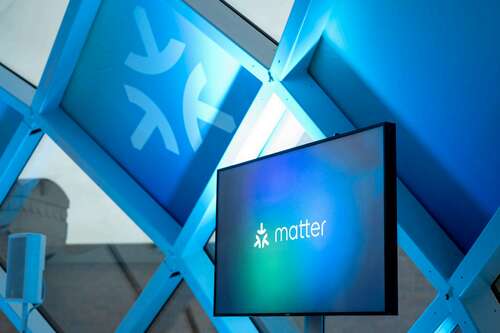
Key Takeaways
- Matter Casting is an open standard for casting media from mobile apps to compatible displays, similar to AirPlay and Chromecast.
- It’s currently limited to Amazon’s Prime Video app and Echo Show 15, but there are plans to expand it to other devices.
- Matter Casting differentiates itself by being platform-agnostic, due to its open-source nature.
Matter Casting joins Apple AirPlay and Google Chromecast as a new media casting technology. You can use it to wirelessly cast videos from your phone to a separate display, like a TV. But what makes it different from those services and how can you use it?
What Is Matter Casting?
Matter Casting is an open standard for casting media from your favorite mobile apps to a compatible display, such as a television, smart display, or a streaming stick connected to a screen. Just like AirPlay and Chromecast, it requires a compatible mobile app and a display to work, but uses the Matter smart home protocol to manage the connection between them.
Amazon has been championing the development of Matter Casting and, as a result, is the first to incorporate it in its Prime Video app and Echo Show 15 device.
One of the biggest highlights of Matter Casting is its ability to control the volume, channel, and source HDMI port on a compatible display. But for that to work, the recipient TV or display must have Matter built-in.
According to The Verge, Amazon hopes Matter Casting will be able to do much more than regular app-to-app media casting in the future. It could be used to enable smart home notifications or stream content from an app on your phone that isn’t available on your TV using just the content URL. But for now, Matter Casting would just help you to cast content from your phone to a bigger screen.
How Is Matter Casting Different From Apple Airplay or Google Chromecast?
Although Matter Casting shares many similarities with AirPlay and Chromecast standards, it’s also different. One of the most significant differences is its open-source and platform-agnostic nature. In contrast, AirPlay and Chromecast are proprietary and limited to Apple and Google’s platforms, respectively.
For example, you can only cast content using AirPlay from Apple devices, as it’s baked into the company’s various platforms. Android apps can’t add AirPlay functionality to cast content to an Apple TV or a Mac.
Chromecast is relatively more open than AirPlay. So, both Android and iOS apps can add Chromecast functionality. But in terms of recipient devices, only Android TV or Google TV smart TVs and Google’s own products, such as Nest displays or Pixel Tablets, get Chromecast built-in by default. TVs running on other platforms, like Tizen, webOS, or VIDAA need to work with Google to get Chromecast support. So, it’s also limited to partnerships.
In contrast, Matter Casting is freely available for anyone to tinker with and integrate into their apps or displays. You don’t need a license or partnership with any company or organization to implement it.
You can also potentially use the new casting standard to control some of your TV’s functions while casting media on it, a task at which both AirPlay and Chromecast are somewhat limited.
That said, Matter Casting, being a nascent casting standard, is still not as feature-rich as AirPlay or Chromecast. For example, TechHive reports that you can’t use Matter Casting to cast music or podcasts on a speaker. While this functionality could be added in the future, as of February 2024, Matter Casting doesn’t work with speakers or anything that doesn’t have a screen.
What Do You Need to Use Matter Casting?
Right now, Matter Casting is limited to Amazon’s Prime Video app and Echo Show 15. If you have both, you can cast media from the Prime app using the Matter Casting button and watch the content on the smart display.
Amazon plans to expand Matter Casting to compatible Fire TV devices in the coming months. Moreover, Plex, Pluto TV, Sling TV, Starz, and ZDF are also working to integrate Matter Casting support in their mobile apps. So Amazon’s device ecosystem, at least, is getting all-in on Matter Casting, which is expected, given Amazon doesn’t use any other casting standard.
As for other manufacturers and app developers, we will have to wait and see.
Can Your Existing Devices Use Matter Casting?
As Matter Casting doesn’t need new hardware, it’s possible for existing devices to use Matter Casting, similar to how existing Fire TVs (some, if not all) will get Matter Casting support from Amazon. However, it will require software updates from the device manufacturers to enable the feature.
So, whether you want it on your smart display, television, or projector, you will have to wait for the device manufacturer to adopt the specification and add it to their offering via an update. But it’s unlikely that device manufacturers will spread the Matter Casting love to devices more than a couple of years old, as they have little incentive to do so. However, newer TVs and smart displays could see Matter Casting support as a built-in feature over the coming years.
Is This a Potential Universal Casting Standard?
Matter Casting has the potential to become a universal casting standard that seamlessly works between devices, a bit like what Matter protocol is trying to do in the smart home and connected devices space. It’s still very early days for it. Matter Casting has at least one big player in the form of Amazon pushing for it, but it will need Apple and Google onboard to hope for any sort of universal casting future.

